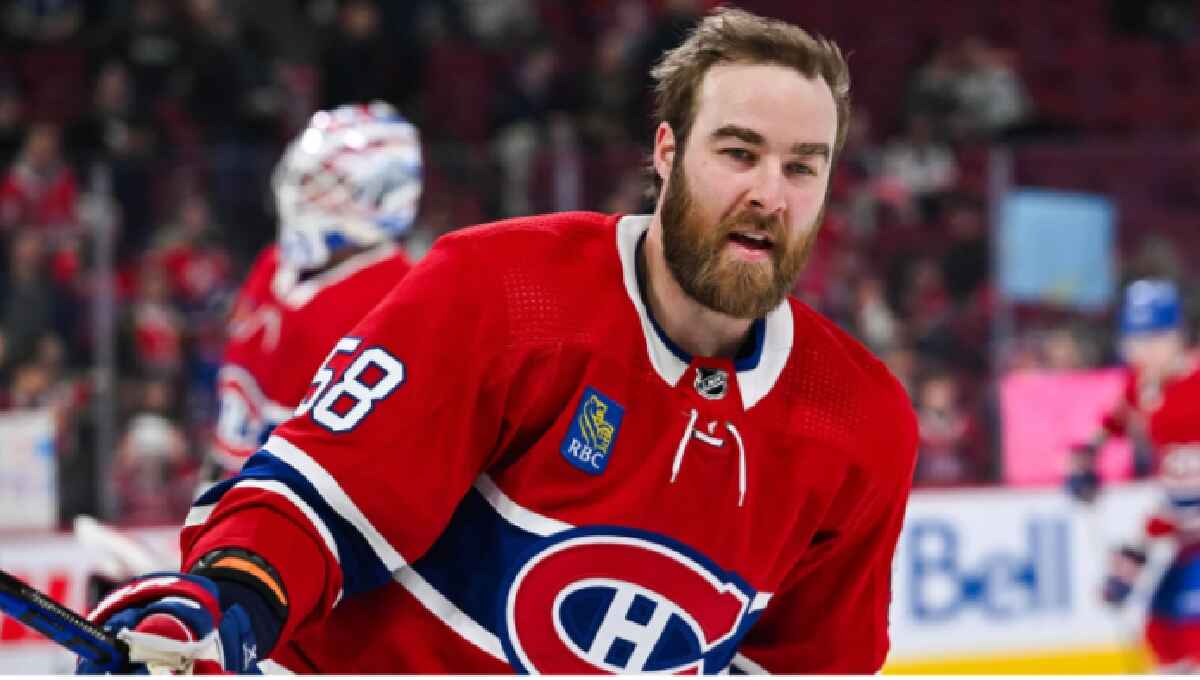
There might be a key factor for the Montreal Canadiens to consider trading David Savard, but it’s not the market. In reality, the current market for right-handed shutdown defensemen, which was somewhat influenced by the recent Chris Tanev trade, could actually be a reason to hold onto him in the end.
To illustrate, when the Calgary Flames traded center Elias Lindholm earlier in the season, the Canadiens were also interested in a similar manner. They then traded fellow center Sean Monahan, arguably the second-best center available during the trade deadline, to acquire a first-round pick.
However, the circumstances have changed this time around.
Flames Establish Benchmark for Trade Market Value
Clearly, the Flames did not receive an impressive return for Tanev from the Dallas Stars/New Jersey Devils. In exchange, they acquired a 2024 second-round pick, a conditional 2026 third-round pick (contingent on the Stars reaching the Stanley Cup Final), and prospect Artem Grushnikov, who is projected to develop as a third-pairing defenseman according to CapFriendly. While there is a possibility that Grushnikov surpasses expectations and the second-round pick turns into a standout NHL player, statistics suggest the likelihood of the pick evolving into a high-impact player is quite low. Assuming Flames GM Craig Conroy is knowledgeable about draft-pick quality, he appeared content with trading Tanev for a depth defenseman and a potential upside represented by the draft pick.
This trade package might not inspire confidence in what Savard could potentially garner in a trade, particularly when data from Natural Stat Trick indicates he ranks poorly among Canadiens defensemen in possession metrics. Although Savard plays a pure defensive role on a struggling defensive team, which may not assist in boosting his stats, comparisons with Tanev show Savard to be less effective at even strength. Despite having a slight advantage in goals scored, focusing on Savard’s goal-scoring attributes might not be a wise strategy, especially for a non-playoff team or a manager facing scrutiny for their decisions.
Why Consider Trading Savard Now?
Admittedly, Savard boasts a more favorable contract with a lower cap hit. Nevertheless, with 75% of Tanev’s salary being retained, this aspect loses its significance. Additionally, Savard is signed for an extra year compared to Tanev, who is set to become an unrestricted free agent, prompting the question: Is it essential for the Canadiens to trade Savard this season?
In reality, there isn’t an immediate urgency to part ways with Savard. Given the ice time he receives, the Canadiens evidently value his defensive skills, leadership qualities, and possibly his Stanley Cup championship experience, despite the team’s recent playoff absences during his tenure. However, this may not be a detail highlighted to potential trade partners.
The allure of Stanley Cup-winning experience holds significant value. This factor could potentially enable the Canadiens to secure a substantial return for Savard, particularly during this time of year when teams are eager to make impactful acquisitions to bolster their roster for a deep playoff run. General Managers often exhibit a willingness to overpay for players, even for complementary contributors like Savard who would slot in at the bottom of a contender’s lineup. This scenario might also explain why Savard could command a higher return compared to his teammate Jordan Harris, who, at just 23 years old, has a promising future ahead.
The primary rationale behind considering a trade involving Savard is to prevent having to move Harris to alleviate the congestion on defense. The left side of the defense, with players like Mike Matheson, Kaiden Guhle, Arber Xhekaj, and Jayden Struble, is overcrowded. Due to this logjam, Harris, who naturally plays on the left, has been deployed on the right, the position typically occupied by Savard.
Some may suggest that Harris’s availability for trade indicates that he is expendable in the Canadiens’ eyes. However, it adds a degree of versatility to his game that they should value instead. It’s worth noting that Matheson (left) and Guhle (right) have also played together. No one in their right mind would suggest the Habs are looking to trade Guhle, though. Nevertheless, Harris trade rumours have admittedly persisted.Hearing the Montreal Canadiens are shopping Jordan Harris ahead of the deadline.Harris is a 23-year-old LHD who skates well and has 1 more year left on his deal ($1.4M). MTL’s overflow of young D has made him expendable. #GoHabsGo @TheHockeyNewsWhere there’s smoke, there may admittedly be fire here. However, if it comes down to Harris or Savard, it should be abundantly clear Harris has more to offer the Canadiens overall, taking everything into consideration. If anyone believes the Habs will re-sign Savard once his contract expires in 2025, they’re willfully ignoring things like the make-up of the current roster, the team’s prospect pipeline, Savard’s age and overall quality of play and, well, logic.That doesn’t mean Savard’s playing his last games with the Canadiens as we speak. It does mean context matters when weighing whether or not they should trade him, though (assuming willing trade partners are out there). If they do trade Savard though, it might be worth it… regardless of what they get back, because of what they currently have in Harris.

Leave a Reply